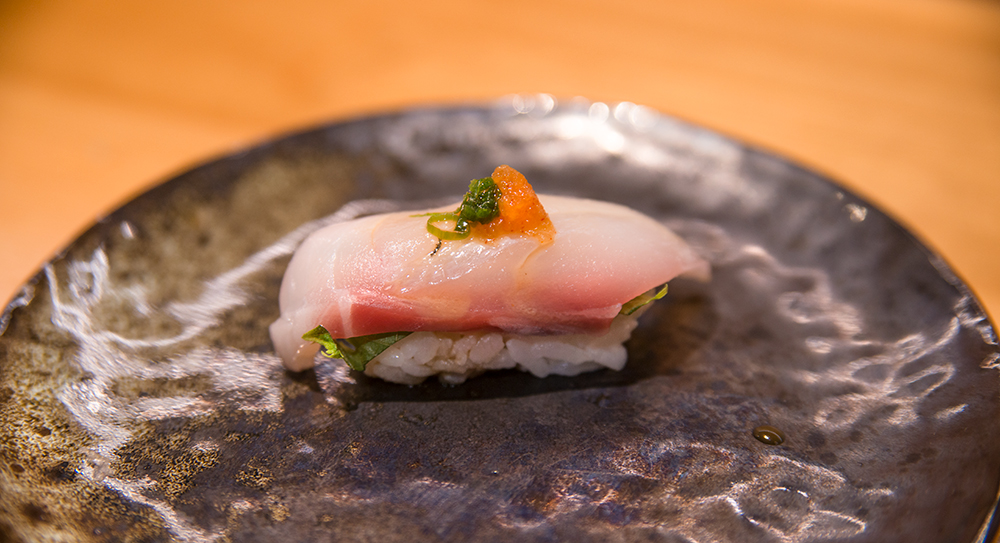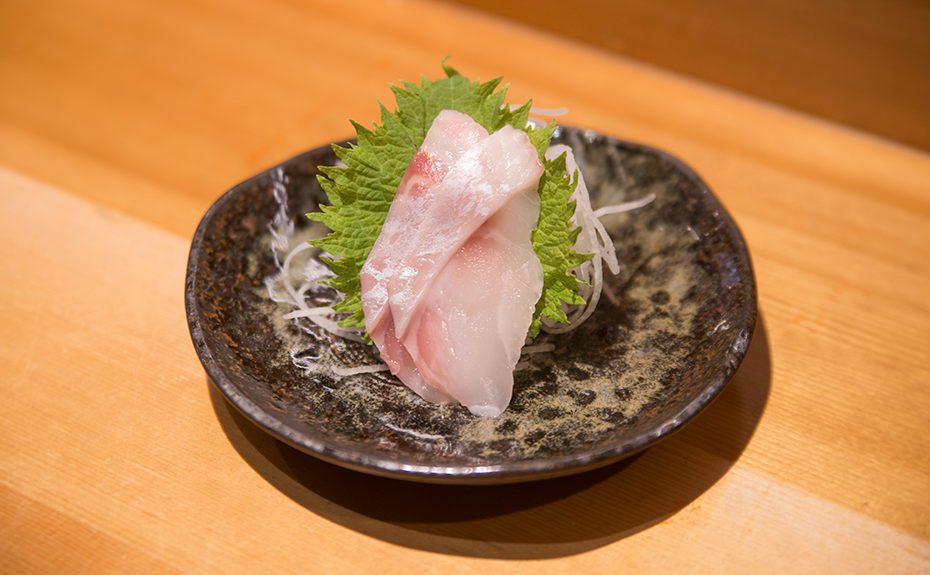Striped bass sushi is becoming increasingly popular in North America. But raw sushi can be intimidating to many.
This post explains why this is the perfect fish for both beginners and experienced sushi bar veterans alike.
Learn a little about striped bass. Then what raw striped bass sushi tastes like, how to prepare it at home, and the fish’s sustainability.
What is Striped Bass?
Striped bass (Morone saxatilis) is an Atlantic sea bass species that is popular in sushi restaurants. It’s a frequent substitute for Japanese sea bass.
Striped bass can grow up to five feet in length. But the ones used for sushi and sashimi are usually around two feet long.
This striped bass sushi post is part of an informative sushi and sashimi guide. Check it out if you want to take your sushi game pro.
Striped Bass Sushi Name
Striped bass is called suzuki (鱸) in Japanese restaurants. Traditionally, suzuki is Japanese sea bass (Lateolabrax japonicus). But the meat of these two fish is very similar in appearance, flavor, and texture.
If you order suzuki in North America, you’re probably going to get striped bass.

Striped Bass Sushi
Raw striped bass sushi is very popular in the US. It’s mild, tender, and not at all fishy. In Japan, they classify suzuki as a white fish (shiromi).
Nigiri is the most popular type of striped bass sushi. This is a thin slice of raw fish molded over a small ball of sushi rice. It’s traditional to add wasabi between the fish and rice.
Sometimes you can find suzuki inside or on top of sushi rolls. The most common way I’ve found it is on top of rainbow rolls.
Striped Bass Sushi Taste
Raw striped bass has a very mild taste. It’s clean, a little briny, and slightly sweet. Striped bass has a firm texture, but there’s some variation. The belly cuts tend to be more tender. The leaner pieces are firmer and springy.
The best part about striped bass sushi and sashimi is how clean it is. There’s no fishiness at all. And despite the light flavor, striped bass is elegant and complex.
Wild Striped Bass Sashimi
Sashimi striped bass is one of my favorites. There’s no sushi rice, just a thin slice of raw fish.
Striped bass sashimi is often served with ponzu sauce on the side.
How to Make Striped Bass Sashimi
Wild striped bass sashimi is easy to make at home. You will need a sharp knife.
And make sure that the striped bass is sushi-grade. This means that the fish is frozen right after it’s caught, at subzero temperatures. The deep freezing kills potential parasites the fish may have.
To make striped bass sashimi, you need to fillet the fish first. Check out the excellent how-to video from Jay Huang below.
Now that you’ve filleted your suzuki, it’s time to make sashimi. Make sure to have a damp cloth to wipe your blade.
Ishinomaki Japan made an entertaining video on slicing sea bass sashimi. This is exactly the same process as slicing striped bass sashimi. Check out their video below.
Striped Bass Sustainability
This is a tricky subject. Wild-caught US Atlantic striped bass is considered a smart seafood choice. And the fishery is sustainably managed, according to NOAA. However, according to the same source, striped bass is overfished.
Huh?
Anecdotal reports seem to suggest that striped bass is overfished.
I’m not going to bash NOAA too much, but this is kind of how they roll. They do a lot of great research and habitat projects. They also go against their own recommendations constantly. This is because NOAA is an office of the Department of Commerce.
Anyway, I suggest enjoying striped bass in moderation. It’s a delicious fish and doing ok. If you care about sustainability, keep an eye out for fisheries closures or poor population data and act accordingly.
If you’re on the West Coast and can get ocean-caught Pacific striped bass, then please eat as much as you can. They’re nonnative fish and should be kept in check.

31 Days of Sushi
If you find this post useful or enjoyable, I suggest you check out some of the other content in my 31 Days of Sushi campaign.
Every day in August I’ll share a new piece of content. Topics are centered around nigiri and maki sushi. I include sashimi info, as well.
It’s like an omakase of sushi information!
What Do You Think About Striped Bass Sushi?
Are you still afraid to try raw sushi and sashimi? I think this is a great one to get you hooked.
Also, do you have a favorite restaurant that serves striped bass?
Please share your thoughts by commenting below!

I love soshimi and fish a lot so wild caught stripped bass is a favorite don’t like farm raised at all. Wild is sweet and tender
I completely agree, wild-caught is better. A lot of farm-raised fish are oily and some are loaded with parasites.